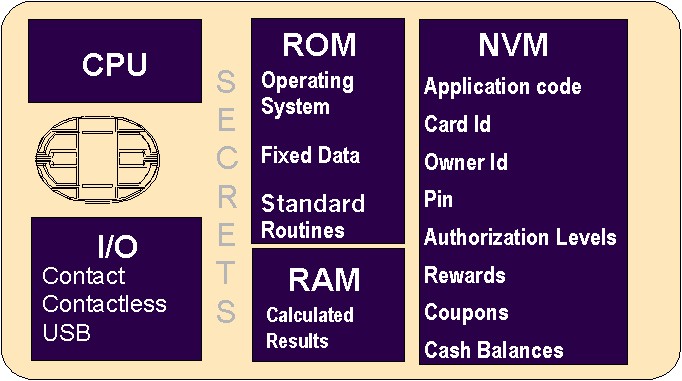


Invented by two German engineers Jurgen Dethloff and Helmut Grottrupp in 1967 and 1968, they filed for a patent in February 1969 but were only granted the patent in 1982 titled "Identifikanden/Identifikationsschalter". Independently, Kunitaka Arimura of the Arimura Technology Institute in Japan filed for a smart card patent in Japan in 1970. The following year, Paul Castrucci of IBM filed an American patent titled "Information Card". A French journalist, Roland Moreno filed 47 smart card related patents in 11 countries between 1974 and 1979.
As the Global adopts the smart card we can see history being rewritten to acknowledge the earlier inventors from Japan and Germany. If France had had its way Roland Morano, who's patents that outline the concepts of a Smart Card, would be the only inventor as the following extract demonstrates - "La "carte à puce" est une invention française, brevetée par Roland Moreno en 1974".
The simple definition is that it is a plastic card with an integrated circuit (computer) [1] embedded inside. This computer is capable of performing a variety of functions including but not limited to:
· Proving that it is the unique card “token” issued to the holder
· Verifying the PIN or password without need to securely communicate with a host[2]
· Performing calculations based on input received from the terminal and data held within its own memory
· Storing and carrying data (coupons, reward point, profile information, etc.)
· Providing a secure means of storing an electronic currency (loyalty points, ePurse or stored value)
· Providing a secure platform to allow the convergence of the variety of plastic cards consumers now carry onto one or more “Multi-Application” cards [3]
[1] The terms integrated circuit card (ICC), chip, and smart card tend to be used synonymously and all refer to the chip on a bankcard containing the payment card application and personalized customer data.
[2] Interac and all PIN Based comestic debit payment cards use “On-line Pin Verification” requiring the encryption of the PIN as it travels from the PIN Pad to the Issuers host.
American Express, MasterCard and Visa use the same technology when cash is withdrawn at an Automated Banking Machine ABM.
[3] Market research conducted by AT&T in Europe indicates that the citizen sees the smart card as a way of consolidating the various cards carried in the wallet into a few multi-applications smart cards. The research concluded that the consumer wants to be able to consolidate their various affiliations and payment accounts onto three or four cards; one for payments, one for services, one for identify and one possibly for health.